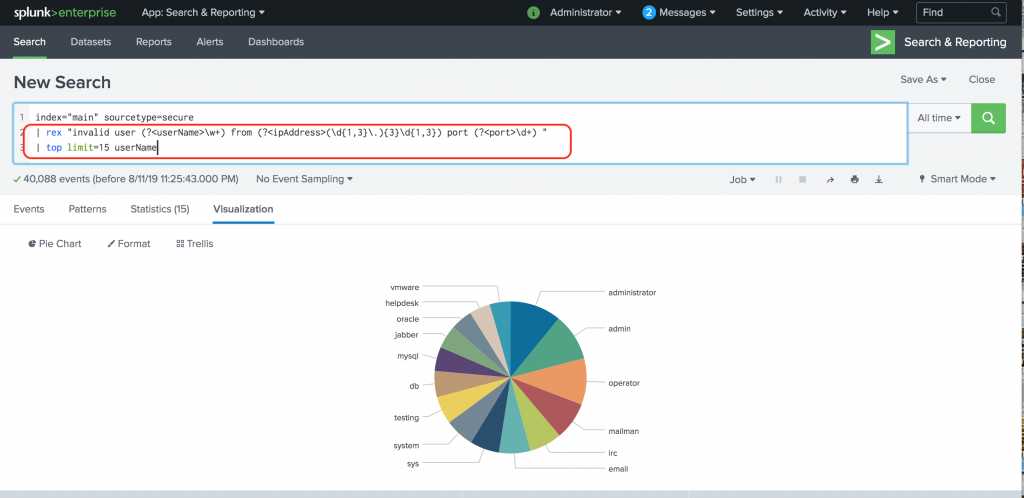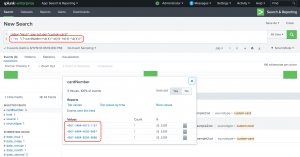

Returns the first/last N results, where N is a positive integerĪdds field values from an external source Returns results in a tabular output for (time-series) chartingĬalculates an expression (see Calculations) Note the decreasing number of results below: Finding entries without IPv4 address on sample data Common Search Commands Command It is a process of narrowing the data down to your focus. Search commands help filter unwanted events, extract additional information, calculate values, transform data, and statistically analyze the indexed data. Here is an example of an event in a web activity log: It can be a text document, configuration file, or entire stack trace. Unless you’re joining two explicit Boolean expressions, omit the AND operator because Splunk assumes the space between any two search terms to be AND.īasic Search offers a shorthand for simple keyword searches in a body of indexed data myIndex without further processing:Īn event is an entry of data representing a set of values associated with a timestamp. Splunk uses what’s called Search Processing Language (SPL), which consists of keywords, quoted phrases, Boolean expressions, wildcards (*), parameter/value pairs, and comparison expressions. The Search Head is for searching, analyzing, visualizing, and summarizing your data.The Forwarder (optional) sends data from a source.The Indexer parses and indexes data added to Splunk.Splunk contains three processing components: Splunk Enterprise search results on sample data With Splunk, not only is it easier for users to excavate and analyze machine-generated data, but it also visualizes and creates reports on such data.


| regex _raw="(?only search results whose "_raw" field contains IP addresses in the non-routable class A (10.0.0.0/8). If a raw event contains "From: Susan To: Bob", then from=Susan and to=Bob. # so, as a beginner, if you are got confusion of which one to use "rex or regex", normally you would required to use "rex".Įxtract "from" and "to" fields using regular expressions. # regex is, generally less-required than rex. This regex command prints out the results that match the specified regular expression.

The regex command removes results that do not match the specified regular expression. A dataset processing command is a command that requires the entire dataset before the command can run. For example, you might apply an orchestrating command to a search to enable or disable a search optimization that helps the overall search complete faster. They do not directly affect the final result set of the search. An Orchestrating command control some aspect of how a search is processed. A transforming command orders the results into a data table(ex: addtotals, stats, rare, table) A generating command generates events or reports from one or more indexes without transforming the events(ex: eventcount, makeresults) A streaming command operates on each event as the event is returned by a search. A command might be streaming or transforming, and also generating. There are six broad types for all of the search commands:ĭistributable streaming, centralized streaming, transforming, generating, orchestrating and dataset processing. Note: Running rex against the _raw field might have a performance impact. (Read about using sed to anonymize data in the Getting Data In Manual). This sed-syntax is also used to mask sensitive data at index-time.įor example, hiding the credit card / SSN numbers while reading credit card / SSN transaction logs. when using "mode=sed", we can do search and replace tasks. This command is used for "search time field extractions". "rex" is the short form of "regular expression". # Edit 2 - little editings - 24th May 2020 # to understand the basic differences between rex and regex


 0 kommentar(er)
0 kommentar(er)
